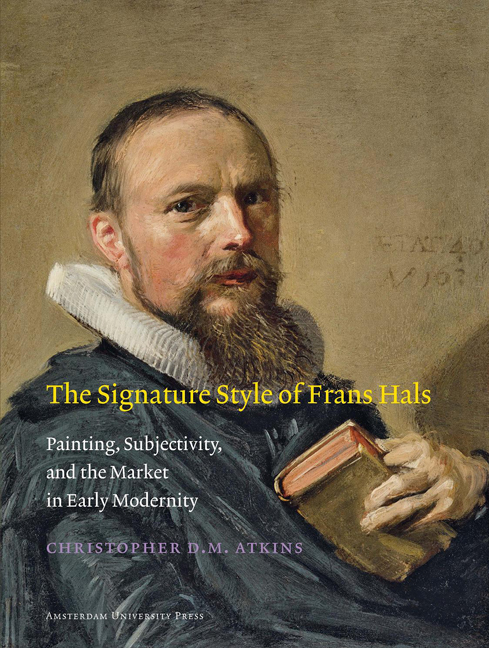Chapter 4 - The Hals Brand
Published online by Cambridge University Press: 14 January 2021
Summary
Although Hals's method was distinctive and operated as a signature style, numerous non-autograph paintings were executed in a Halsian manner, including many that are likely to have been produced in his lifetime. Over time, scholars have expunged these Halsian works from the number of autograph paintings in an effort to define Hals's oeuvre. Pictures have been considered in black-and-white terms as either by Hals or not, or in Mau van Dantzig's terms as either “true” or “false.” The Rembrandt Research Project (RRP), whose task was to define the corpus of Rembrandt's paintings, began under similar assumptions, but it has found that a significant number of the “non-Rembrandts” were most likely painted by members of his studio. In light of this development and the numerous recent studies on early modern workshops that have followed in the RRP's wake, it is necessary to consider if some of the rejected Halsian pictures are products of the workshop Hals is known to have operated. If so, the implications for the understanding of Hals's rough manner are substantial, as it implies that the artist could have sanctioned others in his studio to employ his personal style.
This chapter, then, tackles the paradox that his signature style may have been used by painters other than Hals by closely examining the role of execution and style in the early modern artist's workshop. Given the interdependent instructional and manufacturing functions of the studio, I use the terms workshop and studio interchangeably throughout the chapter to describe both the physical space where pictures were painted and the collective enterprise that collaboratively produced these items. Understanding these dual functions of the studio, it is possible to examine how Hals's signature style could reference a corporate – or studio – identity as well as a personal one.
Hals's Workshop
Various sources indicate that Hals maintained a well-populated workshop. Arnold Houbraken's 1718 compendium of lives of artists provides the most extensive picture of possible studio assistants. In his life of Hals, Houbraken named two pupils – Dirck van Delen and Adriaen Brouwer. Additionally, Houbraken concluded his life of Hals by stating that he found the names of several of the painter's sons – Harmen, Frans II, Jan, and Claes – in the records of the Haarlem Guild of St. Luke.
- Type
- Chapter
- Information
- Signature Style of Frans HalsPainting, Subjectivity, and the Market in Early Modernity, pp. 161 - 192Publisher: Amsterdam University PressPrint publication year: 2012



